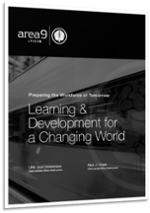A focus on quick fixes results in learning and development (L&D) “technical debt” that is too great for companies to bear today, given greater demands to build proficiencies throughout their workforce. By understanding what cutting-edge adaptive learning looks like, companies can take the first step toward paying down technical debt and improving L&D with a truly personalized approach.
In software development, “technical debt” is a well-understood term that refers to the cost of additional rework that results from choosing an “easy” but limited solution instead of using a better though longer approach. Just like any other debt, the longer you wait to act on it, the bigger it becomes. A helpful way to think about technical debt is to compare it with monetary debt: what isn’t addressed becomes far more costly due to compounding interest.
Software developer, author, and blogger Martin Fowler created a grid to illustrate four quadrants of the types and causes of software technical debt: reckless vs. prudent and deliberate vs. inadvertent.

As we can see, the quadrants move through a progression, from the reckless yet deliberate thinking that there is no time for design, to knowing what should have been done. The grid doesn’t minimize technical debt, but it does make it easier to understand and, therefore, to address.
The High Cost of L&D Technical Debt
With this understanding, we can see the corollary with the technical debt that results when companies do not use adaptive learning as part of their learning and development (L&D) strategies:

Our discussion here focuses on the inadvertent, though reckless, technical debt caused by a lack of awareness of adaptive learning. This deficit carries a high cost in the nearly $100 billion corporate learning market in which the flaws are well-known: learner fatigue and dissatisfaction and widespread “check the box” attitudes for compliance training. Plus, there’s little evidence to suggest that traditional corporate e-learning results in any sustained learning. The cost of ineffective L&D is too great to bear, given the high stakes of reskilling workers with greater efficiency and effectiveness to keep pace with changes in the technology-enabled workplace. This is why corporate e-learning technical debt must be addressed with adaptive learning.
Understanding Adaptive Learning
Adaptive learning delivers personalized instruction at scale for more efficient and effective L&D. It starts with an authoring engine specifically designed to build adaptive learning solutions, rather than static or simple branching e-learning. When combined with powerful algorithms, adaptive courses adjust dynamically to meet the needs of every learner. With a question-driven approach, adaptive learning uncovers what each learner has already mastered and where they have knowledge and skills gaps. This active learning approach is far more engaging than requiring every learner to endure the same material whether they have mastered it or not, and allows for learners to receive additional support in areas in which they struggle. As we have seen in our work with clients, learners often achieve competency in half the amount of time compared to traditional classroom and non adaptive e-learning.
Area9 Rhapsode™: A World-Class Adaptive Learning Solution
Addressing the L&D technical debt with adaptive learning is easier and more efficient than ever before, given the suite of tools available on the world’s most advanced adaptive learning platform: Area9 Rhapsode™. Rhapsode brings together machine learning, artificial intelligence, cognitive engineering, analytics, and learning technologies for the latest in content creation, curation, and publishing.
The application of learning engineering through Rhapsode enables chief learning officers and other L&D professionals to become more conscious about what instructional content must do and brings design into the process. The use of learning objectives, probes (questions and problems), and learning resources (content) encourages a disciplined and thoughtful approach to learning design. There is a logical progression based on the learner’s needs. In other words, Rhapsode adapts to the learner, and not the other way around.
A few, select features of Rhapsode include:
- Algorithmic adaptivity – minute-by-minute, Rhapsode adjusts to meet the unique needs of every learner
- Reusability – content can be reused at the course, topic, module, or item level. Existing resources can be imported and leveraged.
- AI – offers auto-generating voiceover and built-in translation capability.
- Reporting – real-time analytics and dashboards give each person in the system clear visibility into what work must be done next.
- Workflows – automated processes driven by roles and responsibilities simplify management of content, making editors and authors more effective.
With a greater need than ever for effective L&D in the 21st century workplace, organizations can no longer afford the technical debt of not using adaptive learning. Companies owe it to themselves and their employees to understand all that adaptive learning can do. Then, knowing this platform exists, companies can move to the fourth quadrant of taking the right steps toward adopting it.
In an upcoming blog, we’ll examine the application of adaptive learning through Area9 Rhapsode™ to address the other sources of L&D technical debt.
Download our latest white paper:
Preparing the Workforce of Tomorrow - Learning & Development for a Changing World










